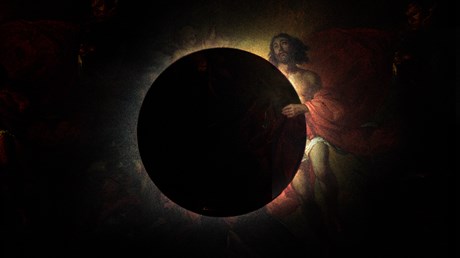Astronomy teaches us to see the light in the world’s darkness.

At the climax of the crucifixion story, darkness comes over the land. Jesus, crowned with thorns, cries out. The earth quakes; the temple curtain is ripped in two. God’s moment of greatest love seems like defeat: a fissure between heaven and earth. But, the Gospels hold, this isn’t the end of the story. The darkness ends, and Sunday morning comes. The stone in front of the grave is rolled away. “Do not be afraid,” an angel declares. “He has risen.”
I’ve often wished I had been there to see this cosmic event with my own eyes. To witness it. To know beyond a shadow of a doubt this was the Son of God. Alas, I wasn’t. I’ve seen no visible stone rolled back nor angelic appearances to light my shadowy doubts or fill those tenacious cracks of spiritual night.
But I have seen a total solar eclipse.
I witnessed the eclipse in 2017, camping in the Smoky Mountains. It’s easy to describe the events leading up to it: the eight-hour drive, the worry about clouds, the marshmallows, mosquitos, and building excitement. But how to describe when the moment hit?
Here are some words I wrote down: wind, cold, 360-degree sunset, crickets, stars, the end of the world.
You see it coming. There’s a shadow, a hundred miles wide, racing toward you, faster than thought. And then it hits. In my memory, it’s like plunging under water. The sound all changes, with a swoosh, like in movies. And the light—it’s not water you’re swimming in. It’s liquid metal. Everything silver, platinum, bizarre. The sun is gone, replaced by an ink-black pupil surrounded with a wild white iris of solar atmosphere.
“Or a morsel of bone,” writes author Annie Dillard in her essay …

